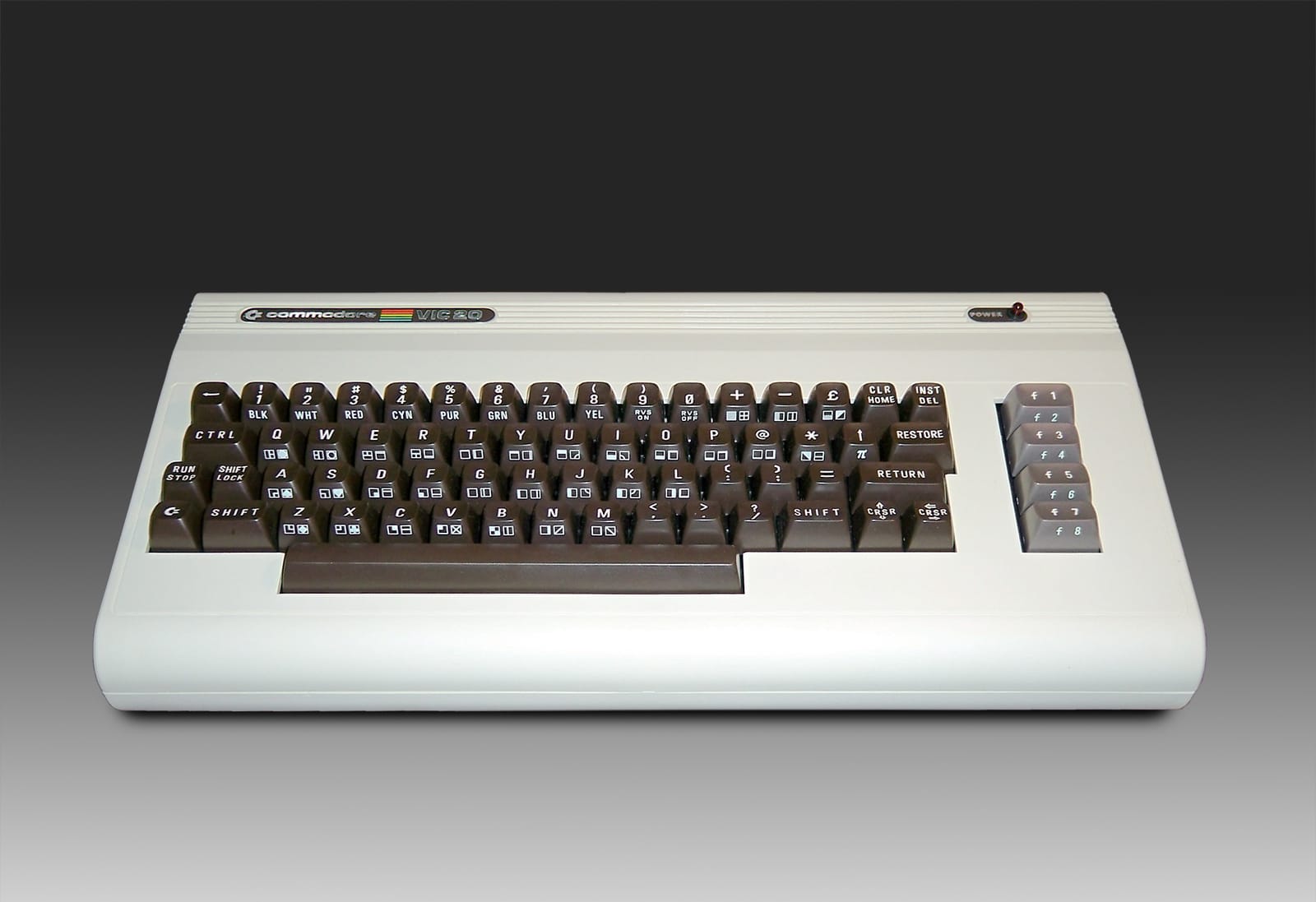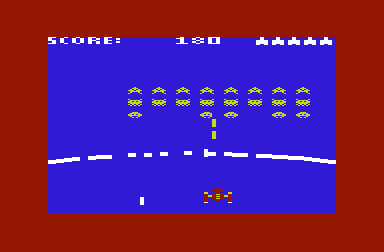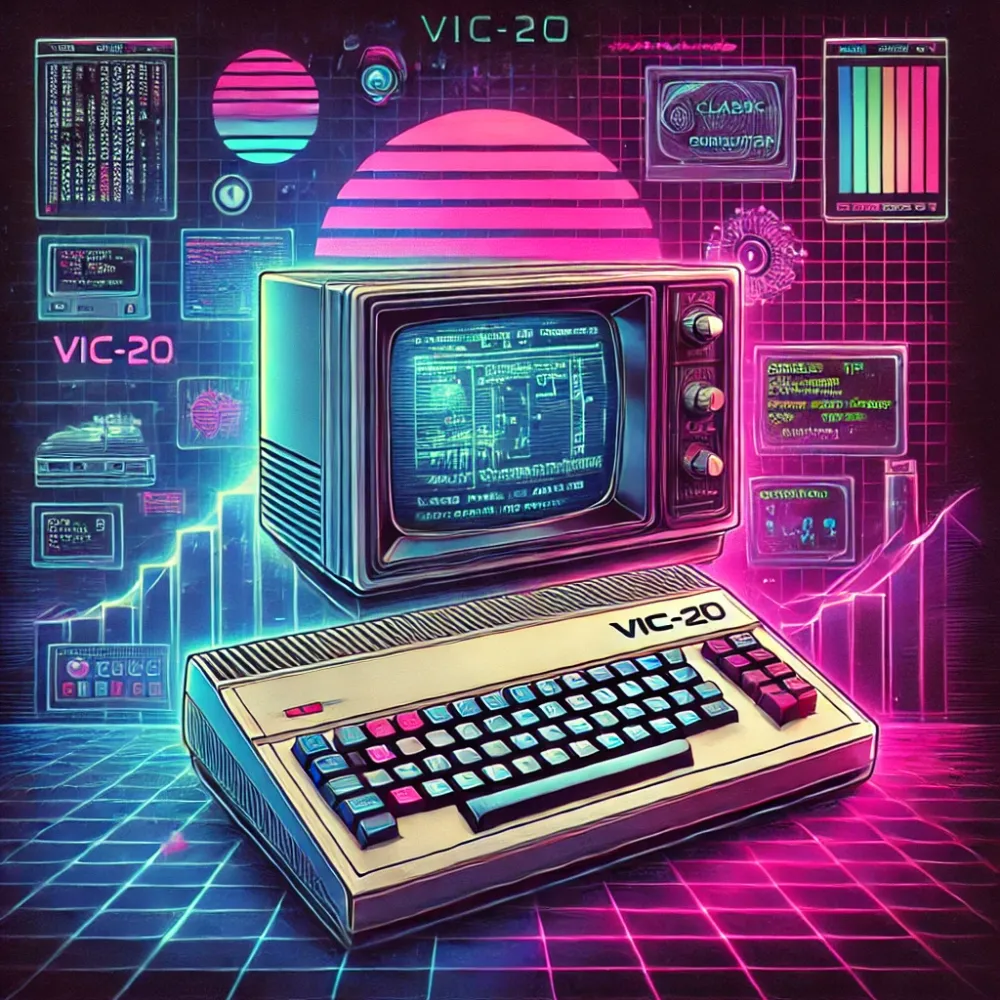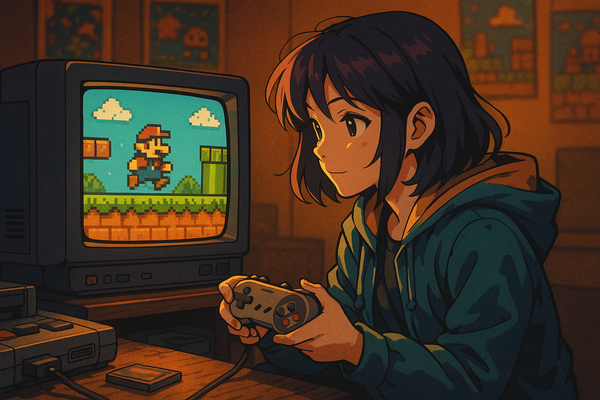VIC-20: The computer that brought computing home
In 1981, the VIC-20 made its debut, heralding a new era of accessible home computing. Developed by Commodore International, the VIC-20 was designed to be affordable and user-friendly, targeting families and first-time computer users. It was one of the first computers to be advertised and sold in department stores, a major shift that made computing visible and attainable for the general public.

The VIC-20’s bright, colorful graphics and programmable capabilities set it apart in an era where computers were typically seen as tools for businesses or enthusiasts. With a built-in BASIC programming language, the VIC-20 allowed users to code their own programs, games, and experiments, creating a generation of new programmers who could explore the world of computing from their living rooms.
Affordable, Accessible, and Revolutionary
What made the VIC-20 revolutionary wasn’t just its affordability—it was how Commodore marketed it. Priced around $300, the VIC-20 was much cheaper than competitors, making it accessible to families and hobbyists who had never considered owning a computer. The ad campaign famously claimed, “The first computer to sell one million units,” emphasizing the VIC-20’s status as a household staple rather than a luxury item. With simple setup and approachable design, it was perfect for beginners, furthering the idea that computers could be an everyday part of life.
Gorf: An Arcade Classic on the VIC-20

One of the standout games for the VIC-20 was Gorf, an arcade-style shooter that demonstrated the computer’s impressive graphics and sound capabilities. Originally an arcade game, Gorf was known for its five distinct levels and engaging gameplay. Players took control of a spaceship, battling waves of enemies in various stages, each with unique mechanics and challenges.
Gorf was among the earliest games to incorporate a “multi-mission” format, providing a variety of play styles within a single game. This structure made it incredibly engaging, and it helped showcase what the VIC-20 could accomplish. Although limited by the computer’s hardware, the VIC-20 version of Gorf still managed to capture the essence of the arcade experience, immersing players in an intergalactic battle with colorful graphics and fast-paced action.
The success of Gorf on the VIC-20 cemented its reputation as a gaming platform as well as a home computer. For many VIC-20 owners, Gorf was the game that sparked their love for video games and proved that home computers could offer more than just programming; they could be portals to new worlds and adventures.
The Magic of Early Home Computing
For those who owned a VIC-20, the experience of booting up the computer, loading a game, and diving into its pixelated worlds was magical. The VIC-20 brought the thrill of computing into everyday life, transforming living rooms into spaces for learning and exploration. It was a time when each game or program felt groundbreaking, a testament to the possibilities of technology.
Even with its limited 5 KB of memory, the VIC-20 inspired creativity and exploration. Many users learned programming basics by entering lines of code and creating simple applications. The sense of accomplishment from creating or modifying a program was profound, and for many, the VIC-20 was a gateway into a lifelong love for technology.
Legacy of the VIC-20
The VIC-20’s influence on the computing industry is undeniable. By making home computing affordable and accessible, it paved the way for future generations of computers like the Commodore 64 and beyond. It showed that computing could be personal, creative, and even playful. Today, the VIC-20 is remembered as a pioneer in the home computer market, loved by retro computing enthusiasts who appreciate its role in making technology accessible to all.
The success of the VIC-20 laid the groundwork for the boom of personal computing, inspiring a generation to explore, create, and embrace technology in everyday life.


